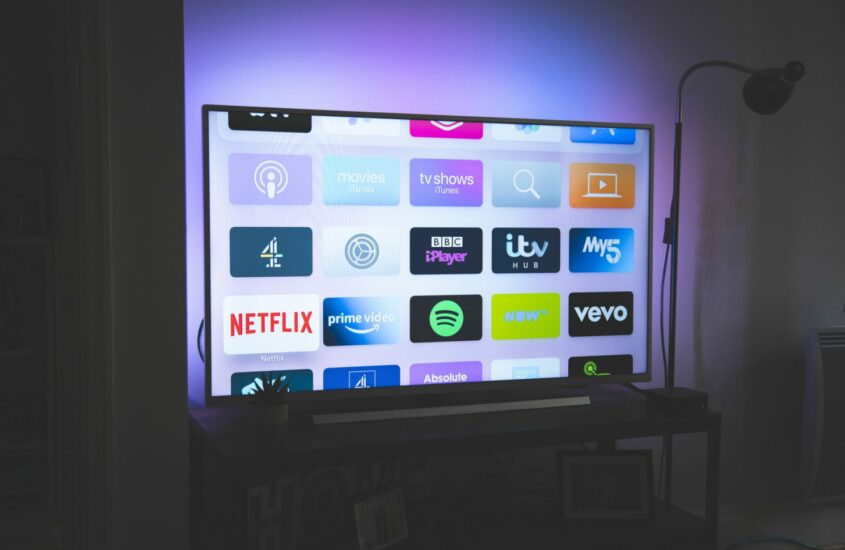Distribution Licensing Agreements In The “Global Content Ecosystem”

The pervasiveness of new technologies has made a huge impact on how content is being distributed nowadays. The players in the space adapting to ever emerging digital platforms and the increasing consumption of on-demand content.
New forms of content distribution have lowered the threshold of bringing content to the masses and unlocked exciting potential for creators as well as producers to reach new audiences and monetize the increased interest. The pandemic has accelerated a paradigm shift toward digital creation and dissemination in virtual worlds. In short, the market place demands for flexibility, customization, and variety. As in-house lawyer of a leading distributor it is the continued evolution of business models and adapted rights holders’ preferences that require me to stay abreast of the current trends that function as pre-cursor to tweaking and updating various clauses and fallback positions in distribution agreements.

What Is A Distribution Deal?
Distribution licensing deals are a common way for TV and film producers to generate revenue and increase the reach of their content. These deals involve licensing the rights to distribute a TV show or movie to a third-party distributor (or sales agent, aggregator), who will then distribute the content to various platforms and channels. In a distribution licensing deal, the producer typically retains ownership of the content and grants the distributor the right to distribute the content for a specified period of time, in specific territories, and on certain platforms. Terms and conditions of each deal may vary quite a bit depending on the bargaining power of the parties involved.
What Are Some Of The Customary Distribution Strategies?
With the rise of new technologies the range of available distribution models has widened and it is incumbent upon the studio/content owner to evaluate the different opportunities and carefully choose the best strategy for their very content. A variety of factors should be considered, including the type of content, the target audience, and the distribution landscape in the specific market.
- Traditional Distribution: This strategy involves licensing content to traditional distribution channels such as movie theaters, broadcast television, and cable TV networks. The content owner typically receives an upfront payment and/or a percentage of revenue generated from the distribution.
- Digital Distribution: Video on demand streaming via individual distribution platforms (e.g. Netflix, Amazon Prime, and HBO Max), digital distribution has become a popular path. This involves licensing content usually for a percentage of revenue generated from the content.
- Direct-to-Consumer (DTC) Distribution: In this strategy, content owners bypass traditional distribution channels and distribute their content directly to consumers via their own streaming platform or website. This can provide more control and flexibility for the content owner, but also requires investment in technology, marketing, and customer support.
Acquisition models are becoming increasingly flexible and depending on the content often a hybrid of multiple strategies is used to maximize revenue. In addition, international distribution may open up a major revenue potential as the world is split up into territories for each of which separate exclusive deals can be made. Also, syndication deals are very common to put out content through multiple distribution channels/platforms, simultaneously or in succession. This requires diligent rights management so that nobody’s rights are being infringed. A staggered release on different channels/platforms – so called “windowing” – can be an effective way to not only increase revenue, but also build anticipation and engagement among viewers. Negotiating such windowing rights can get complex very fast very easily and holdback provisions need to be tailored to the specific situation otherwise the exploitation of certain rights could be unintentionally blocked for a painfully long period.

What Makes A Good Licensing Agreement?
Ultimately, a good licensing agreement is one that results in a win-win situation for both the licensor (distribution company or studio, sales agent) and licensee (content owner), and helps to maximize the value of the content being licensed. Any good transactional lawyer knows how client relations are crucial to the negotiation process as a whole and collaborating in a constructive way with the other party can be invaluable. An open and direct exchange between licensor and licensee may expedite the joint efforts in closing a deal and helps to create more of a sense of partnership, rather than an adversarial relationship.
- Clear terms: The licensing agreement should clearly outline the rights and obligations of both parties.
- Flexibility: At the same time, the agreement should be drafted flexible enough to allow for changes in the market or in the content itself. For example, the licensee may want to include options to expand the licensing period, acquire subsequent spin-offs, and sublicense/assign its rights and obligations to affiliated companies.
- Fair compensation: Further, the contract should provide for fair compensation to the licensor based on the value of the content being licensed as well as its distribution potential.
- Protection for both parties: Always keep the worst case scenario in mind: the licensing agreement should include provisions to protect the rights of both parties, such as termination clauses and force majeure provisions.
- Professional advice: It’s important for both parties to seek the advice of legal and financial experts when negotiating and drafting a licensing agreement, to ensure that their interests are being met and legal responsibilities and risks are taken care of properly.
What Are Some Of The Key Terms And Conditions?
Here are some key characteristics that are pertinent to include in a content sales/acquisition licensing agreement:
- Grant of Rights: There are different types of distribution rights for content, linear and non-linear rights which can be licensed on an exclusive or non-exclusive basis. Linear rights refer to the traditional broadcast, such as through a television network or cable channel. Here, a broadcaster airs content according to a pre-set schedule, with viewers required to tune in at a specific time to watch the content. Non-linear rights, on the other hand, refer to on-demand viewing models (e.g. subscription, transactional, advertising-based, catch-up rights) where viewers may individually choose time and place to consume content. Sales departments often come up with more and more rights to sell which can easily stir confusion as those are just sub-categories which are merely packaged differently. Especially when it comes to VOD rights things can get very creative. I have had clients who wished for BVOD, HVOD, EVOD rights, etc. The latest hype – at least in Europe – is distribution via free ad-supported streaming television (FAST in short) which appear to be understood in the industry as linear right and may be important in terms of the amount of licensed runs.
- Territory: The distribution company or studio will typically acquire the rights to distribute the content in a specific geographic territory. Typically, territory is split up into domestic and foreign. Domestic refers to the United States (it can include Canada, at least English-speaking Canada as well). It may also refer to U.S. territories, possession’s & military bases. Foreign rights usually mean the rest of the world. It is important to define each territory and territory carve-outs, if any. It’s in the licensor’s interest to clarify which rights they intend to retain so they can sell those in other countries.
- Term: On the acquisition side, the distribution term of the deal refers to the length of time that the distributor will have the rights to distribute the content and ranges from a few years to a decade or more (in perpetuity). This is not to confuse with the exploitation term which refers to the period during which distributor is allowed to grant rights to a third party (its licensees). The exploitation term runs longer than the distribution term so that the distributor is still able to close licensing deals when the end of the distribution terms approaches. On the sales side, the license period outlines the length licensee may exploit the program for. Depending on the specific situation of course, the parties may incorporate holdback provisions that limit the licensor from exploiting or authorizing to exploit the content during the time of the holdback. It is crucial to expressly state as to which rights and language version such holdback applies to.
- Channels/Platforms: The deal should specify the broadcast channels and VOD-platforms on which the content can be distributed. With media companies merging all over the place and on a rather frequent basis it is becoming more challenging than ever to track where a program is being exploited. Hence, it is pivotal to outline the exploitation means avoiding vague language.
- Compensation: Minimum guarantee: In some cases, the distribution company or studio may offer the content owner a minimum guarantee, which is a predetermined amount of money that the content owner will receive regardless of how well the content performs. The minimum guarantee can provide some financial security for the content owner, but may also limit their potential upside if the content is successful. Revenue sharing: The distribution company or studio and the content owner will typically agree to a revenue sharing arrangement, whereby the distribution company or studio receives a percentage of the revenue generated by the content. The percentage can vary widely depending on factors such as the popularity of the content, the bargaining power of the parties involved, and the costs associated with distribution.
- Creative control/Consultancy: Particularly when it comes to negotiating acquisition deals, the producer/content owner will try to retain creative control over the content. Depending on the distributor’s involvement though, especially if the company is also a financier or co-producer, it will negotiate for at least meaningful consultation rights if not also approval rights (not to be unreasonably withheld).
- Marketing and promotion: The distributor may be responsible for marketing and promoting the program, which can include activities like creating trailers, running advertisements, and organizing press events. Oftentimes, it is the initial marketing/promotion the distributor will want to be in charge of, especially so if it is coordinating international releases in several territories. Notwithstanding the foregoing, a distributor will likely be open to agree to prior consultation with the producer. After all, it is the perfect timing of juggling press releases and putting out promo materials to create buzz at the markets which is in both parties’ interests.
Which Other Provisions Should One Watch Out For?
- Delivery requirements (Deliverables): The content owner will typically be required to deliver the content to the distributor in a specific format and on a specific timeline. Failure to meet these delivery requirements can result in penalties or even termination of the deal.
- Renewal options: An option to renew the deal for additional terms at a predetermined price. Also, options for subsequent seasons and spin-offs are common in distribution agreements.
- Force majeure: After the pandemic in particular, force major events are getting more attention than they have in the past and those tend to include now also very specific COVID 19 incidents laying out how parties will proceed in case of delays impacting production. Recently, given the geopolitical events war clauses increasingly become a focal point in negotiations.
- Cost/Expense Deductions: From their portion of sales, film distributors will deduct all the costs associated with the program’s release. This can be a fixed or capped amount (percentage). In addition, expenses for dubbing, outside legal fees, anti-piracy measures and other costs could also be included. It’s common to write in a “cross-collateralization clause,” which can either mean the producer’s work may be sold in a package to support the sale of weaker titles or the expenses from one market in which the producer’s work is distributed are offset against revenues attributed to other markets.





Comments are closed.